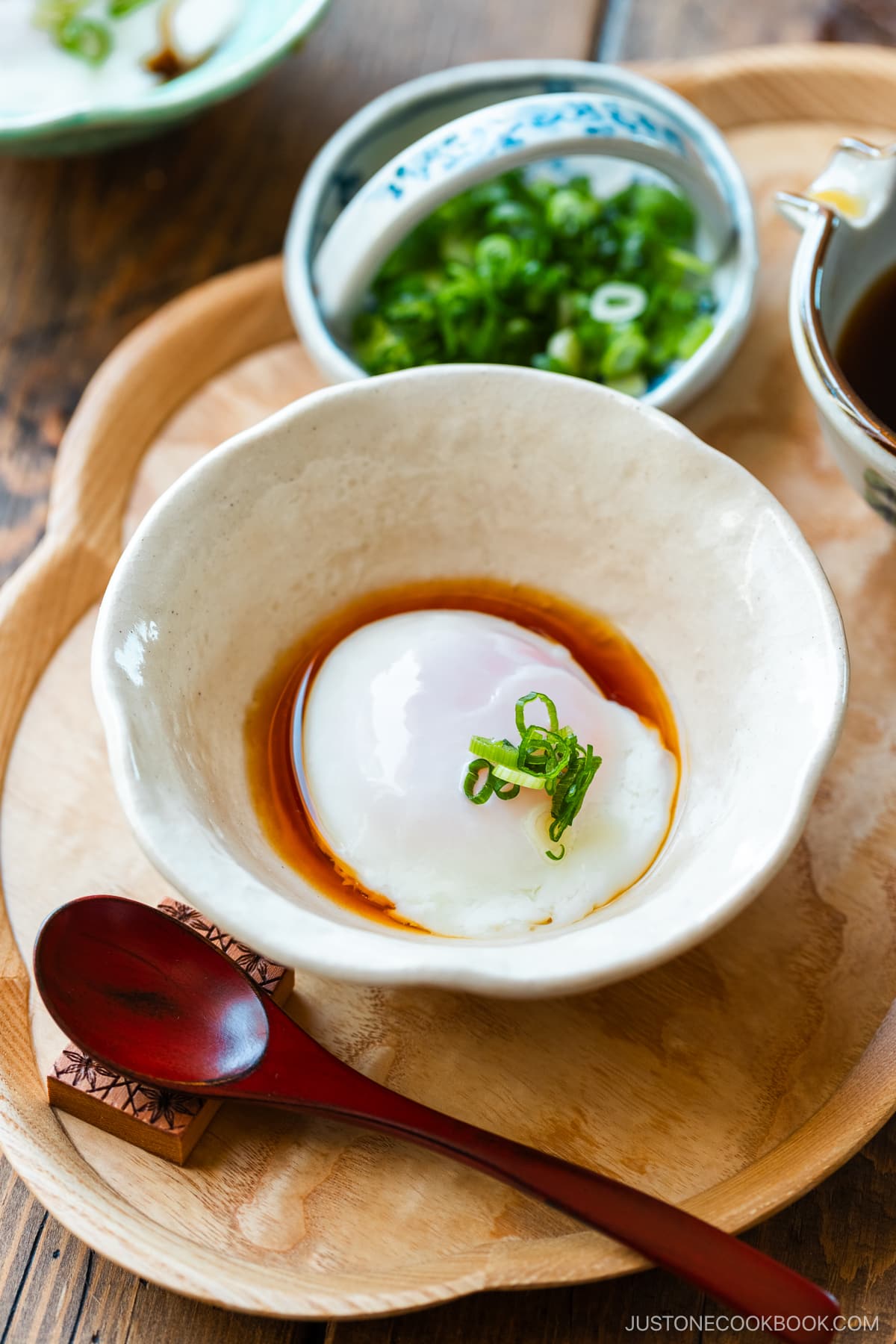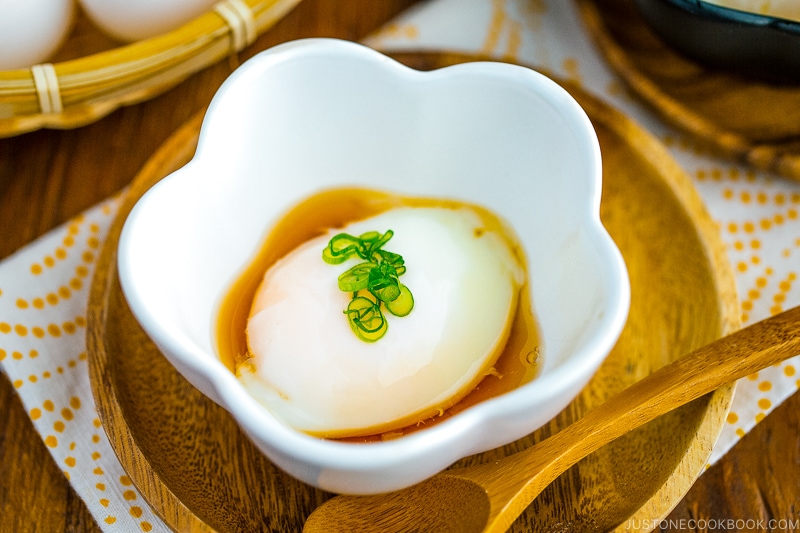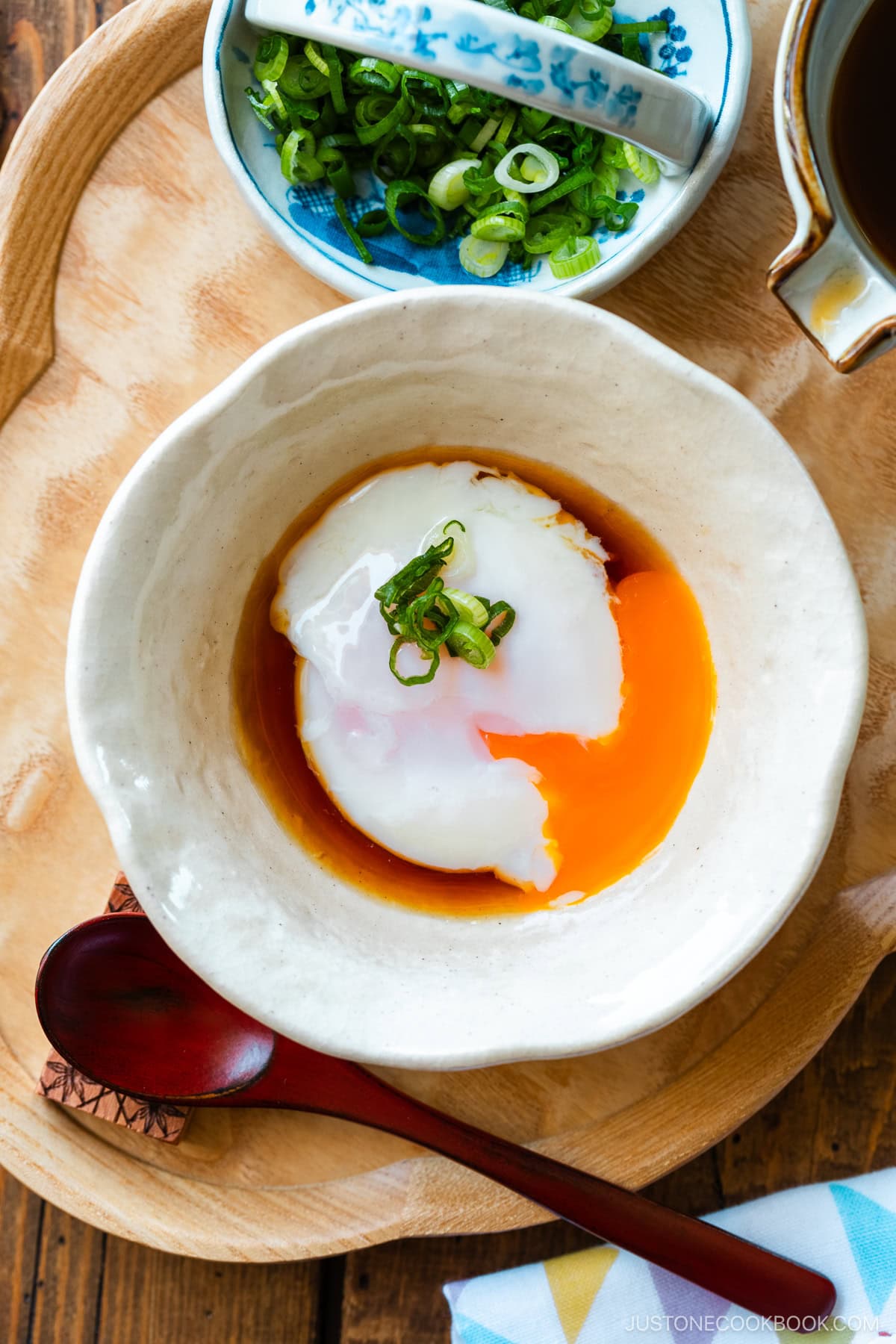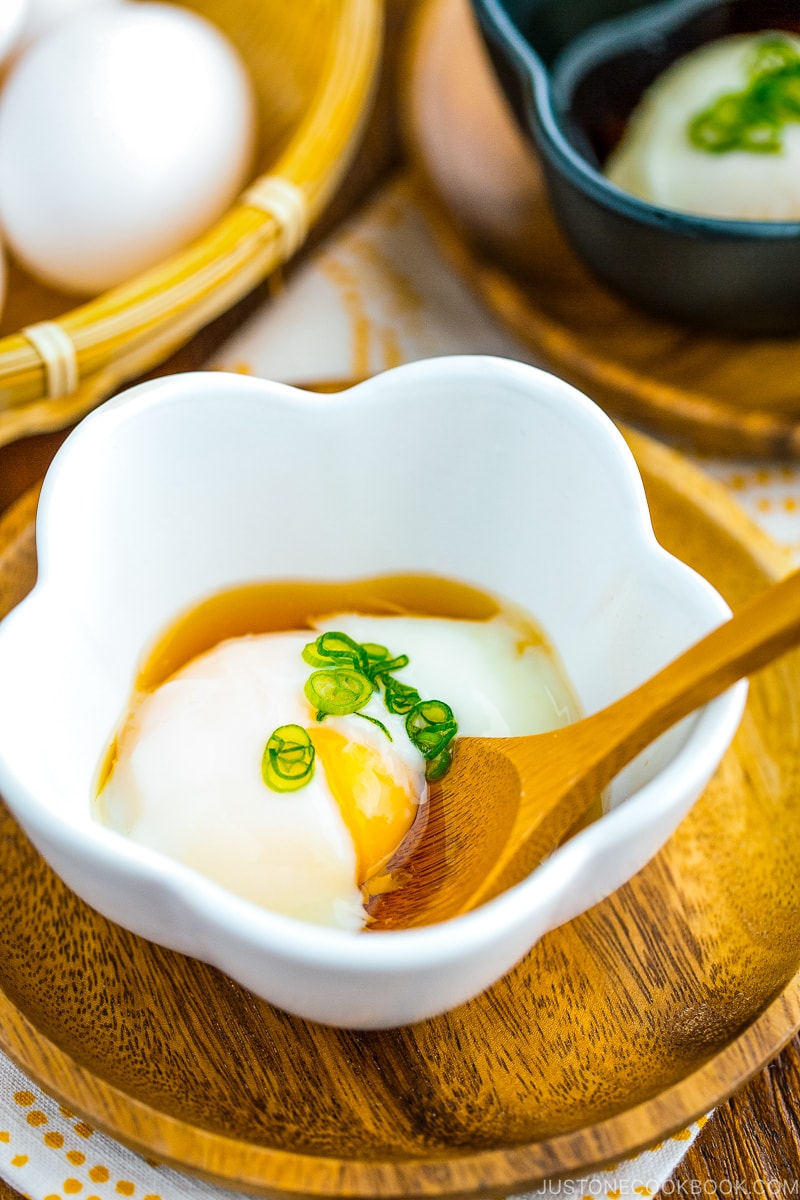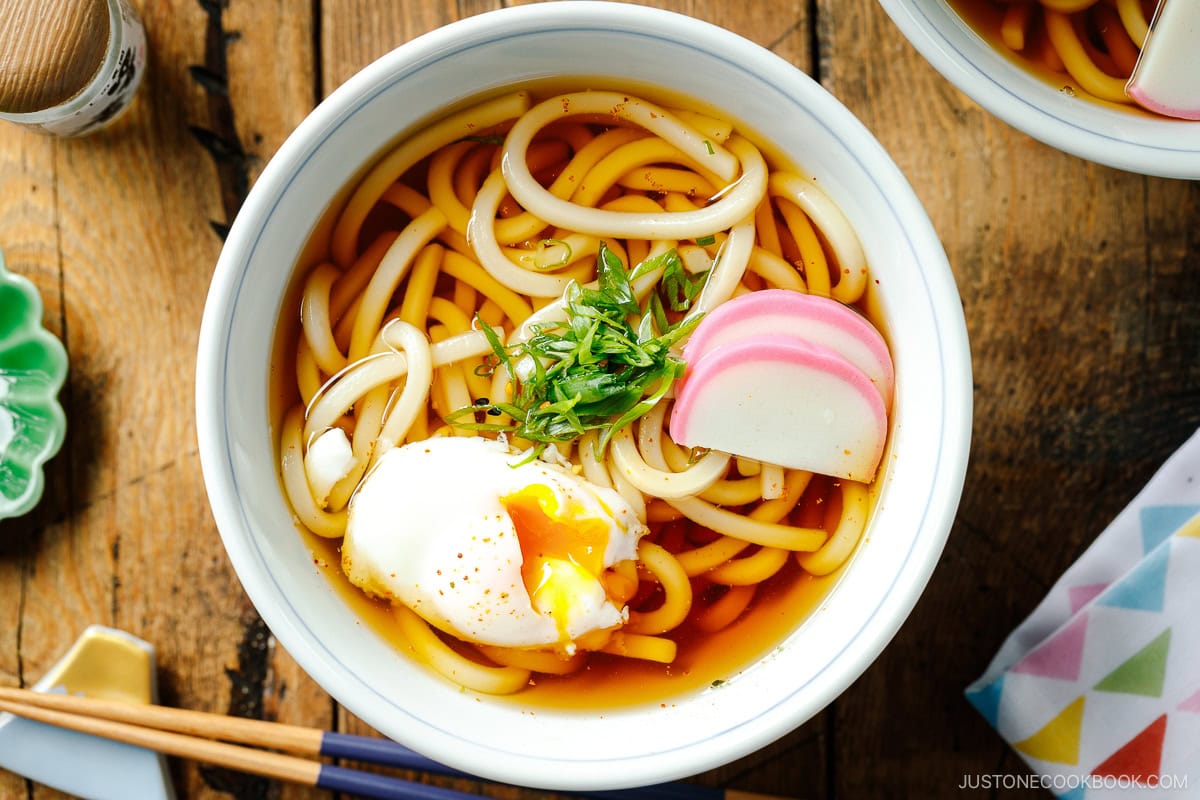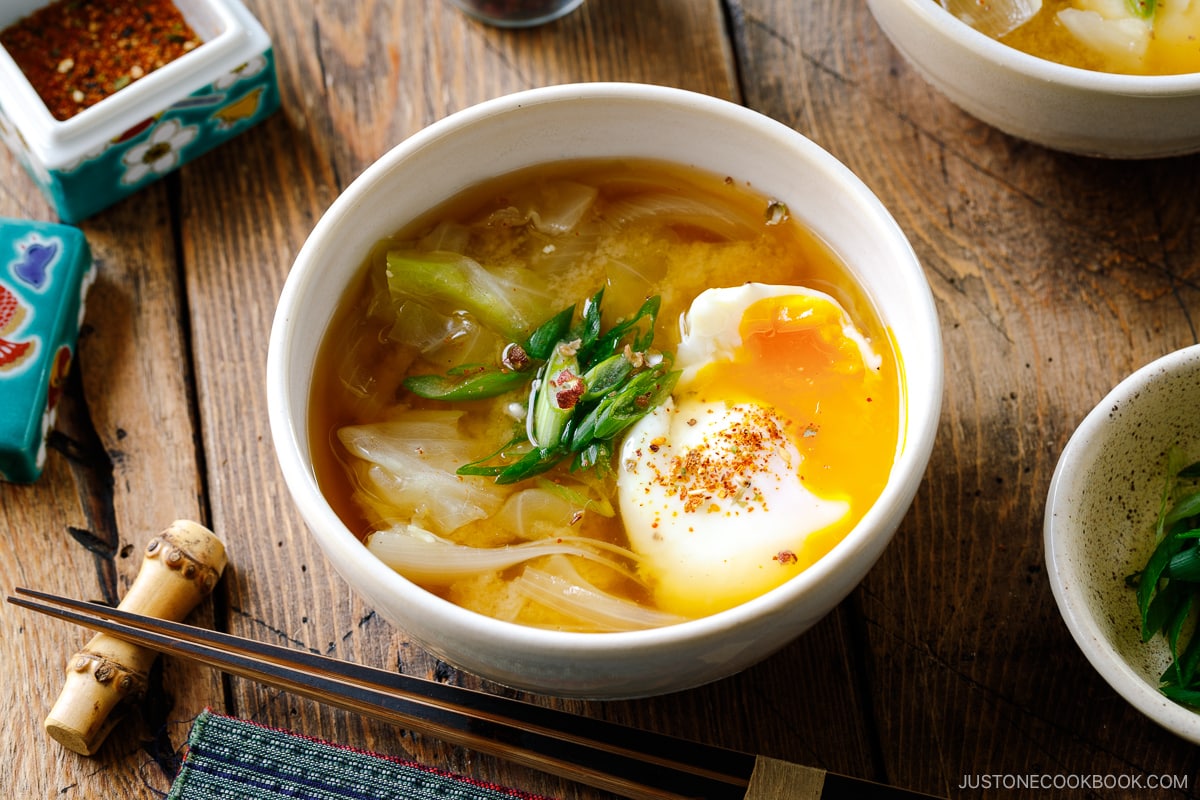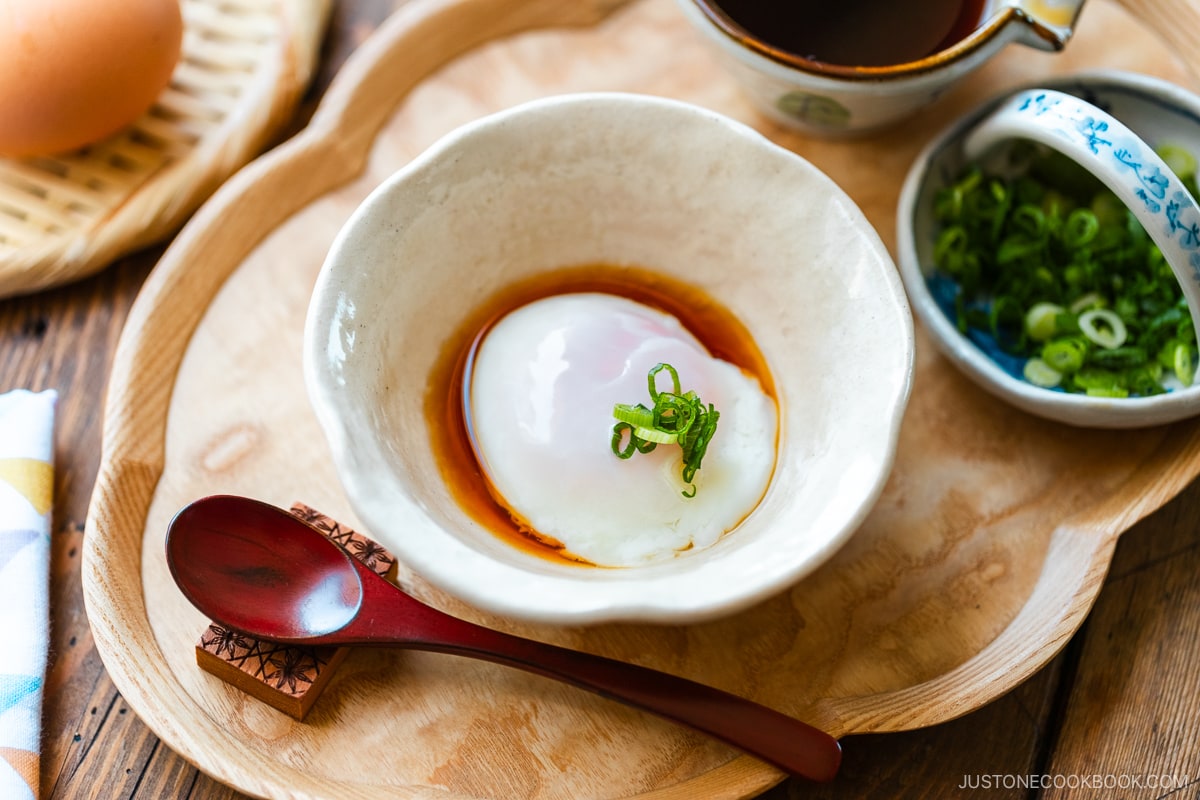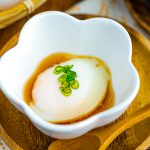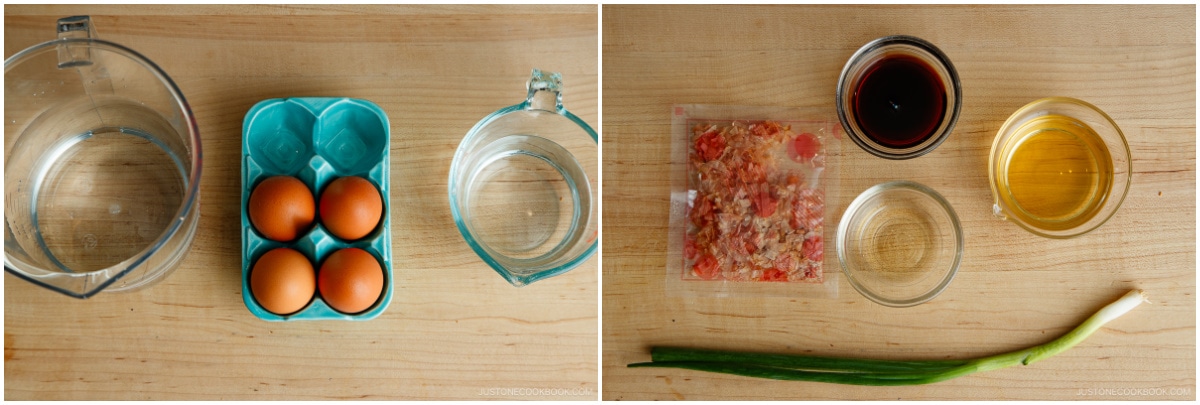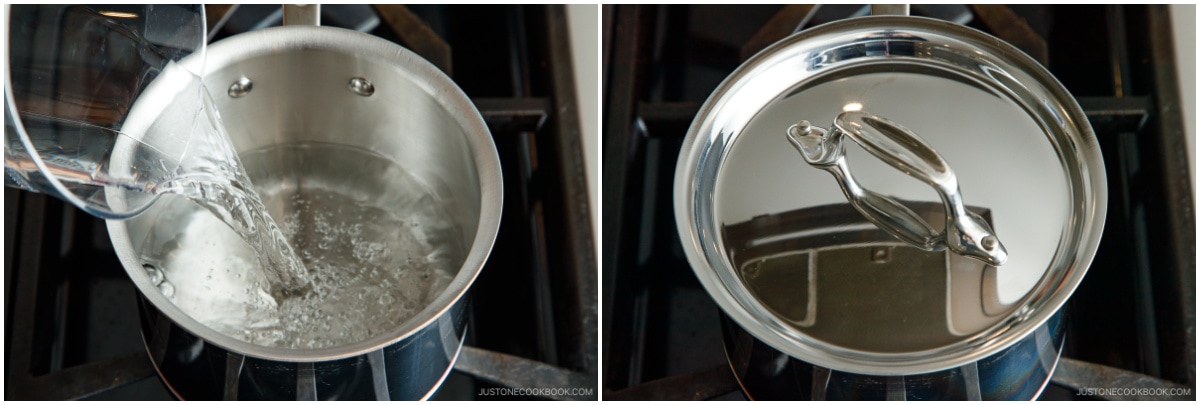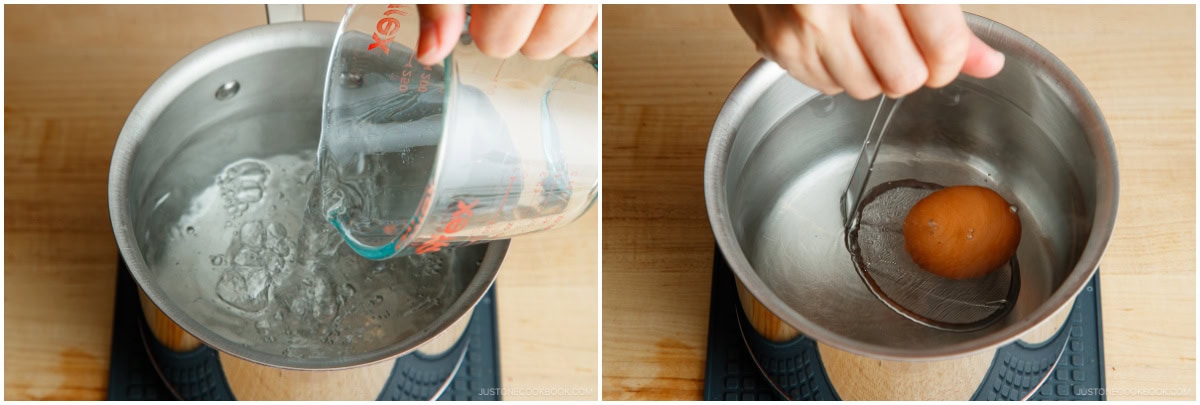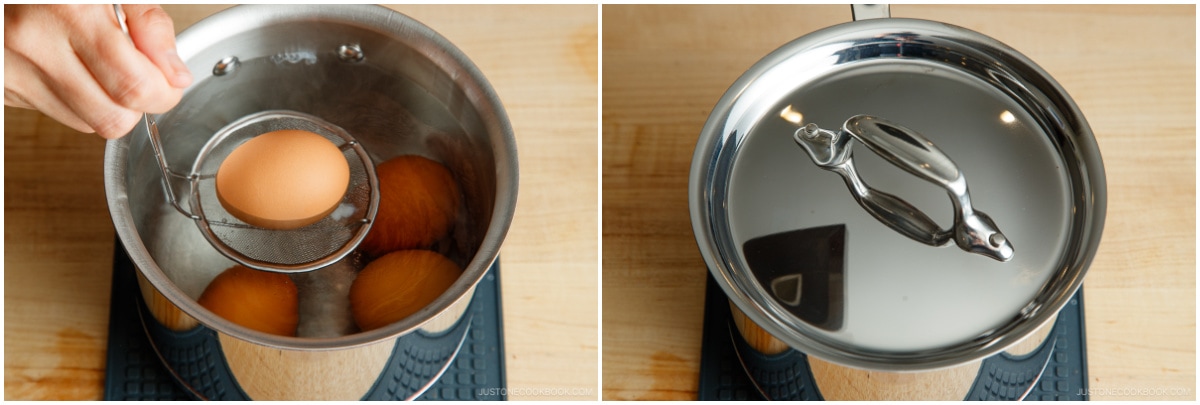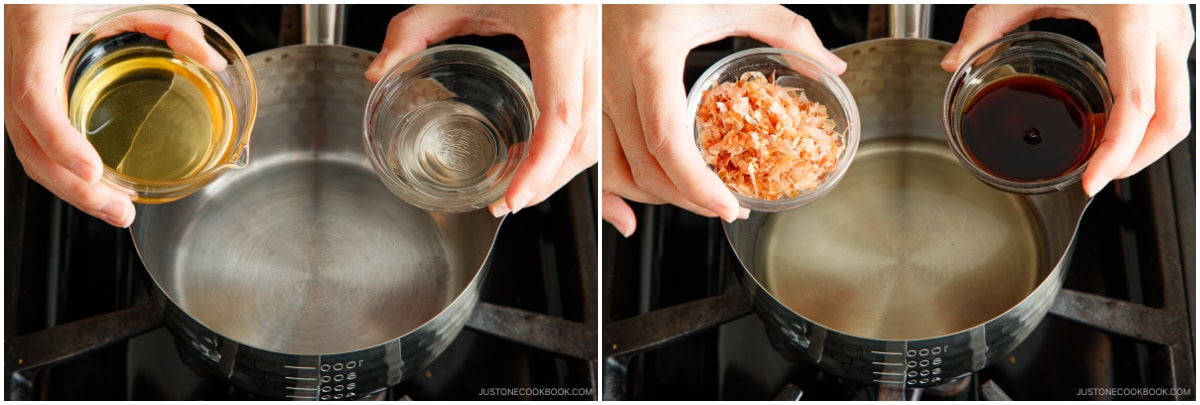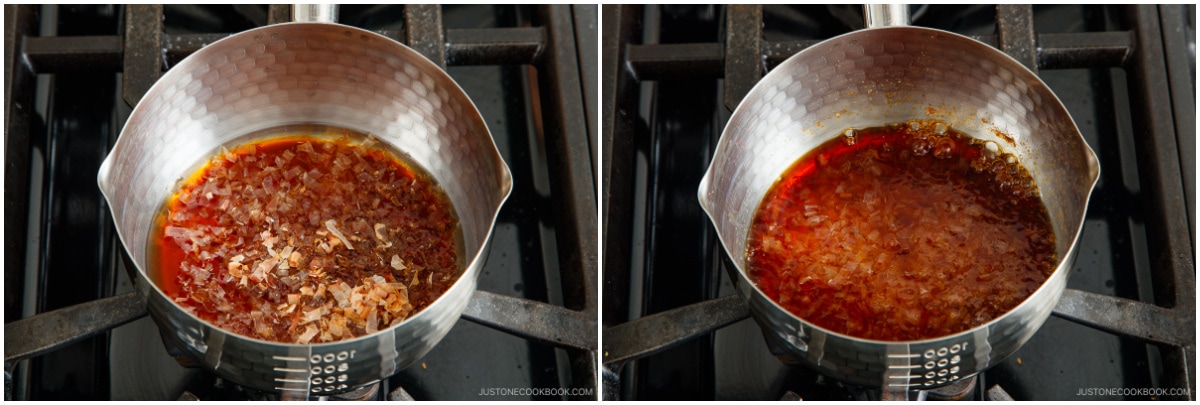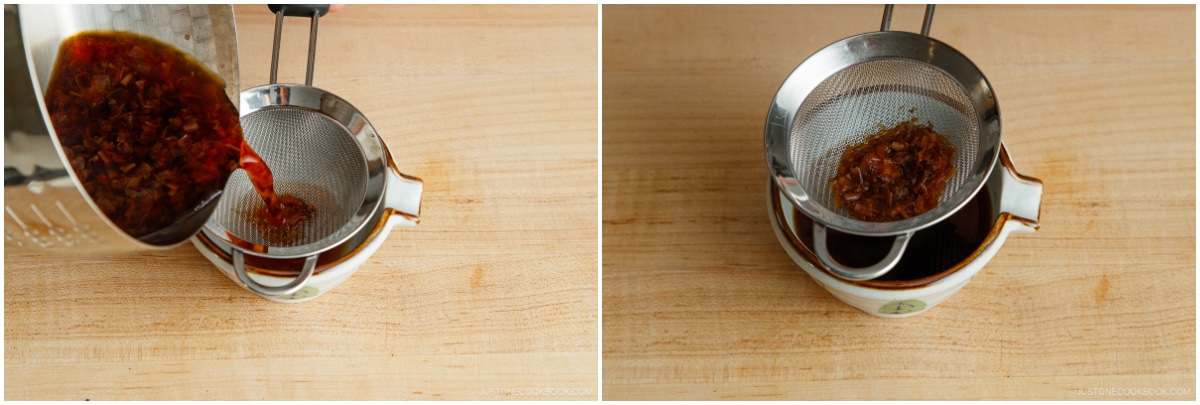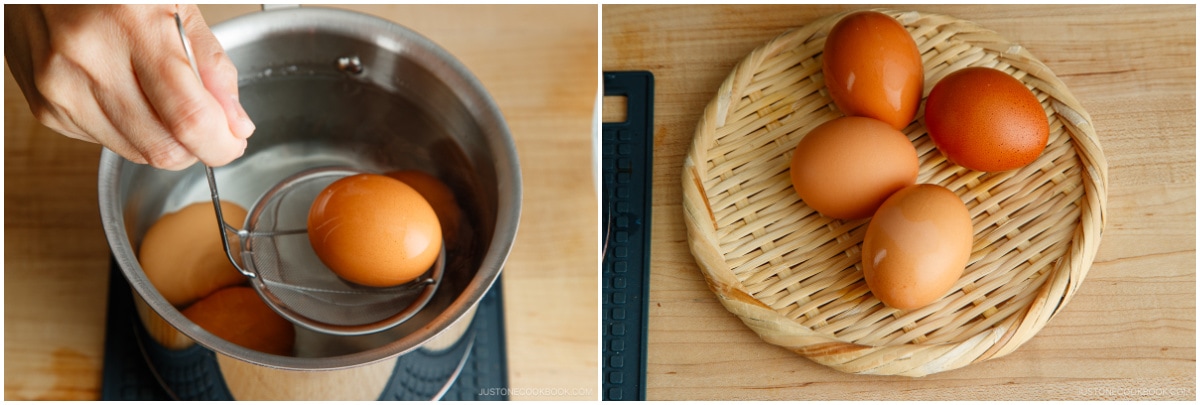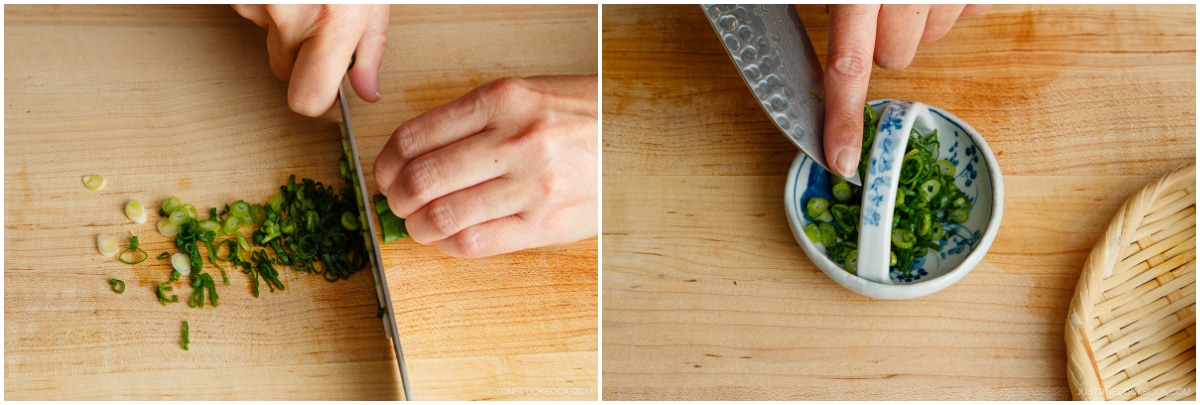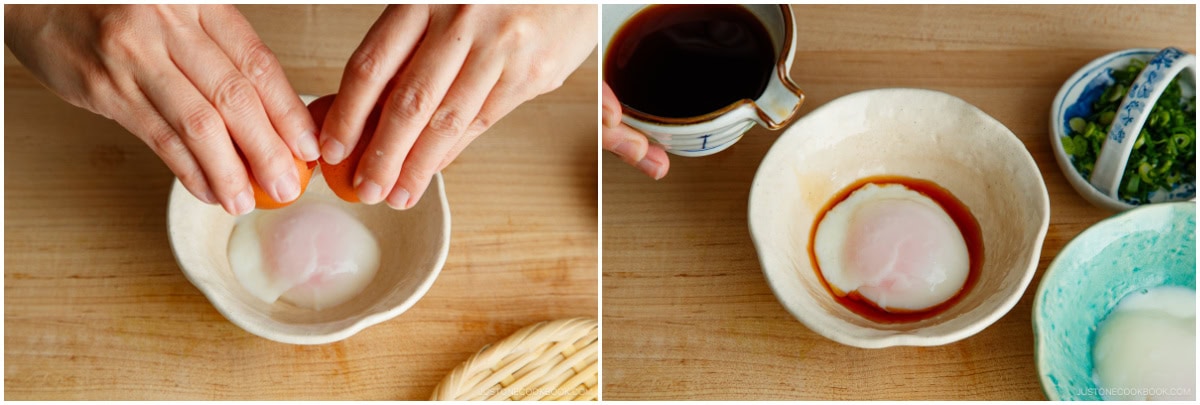Japan is world-famous for its 30,000+ natural hot springs or onsen. Visitors can take a relaxing and therapeutic bath at one of Japan‘s 3,000 onsen resorts and stay at a resort’s ryokan or traditional inn to experience their warm hospitality and delicious cuisine. When I stay at a ryokan, one of their breakfast dishes that I eagerly anticipate is onsen tamago (温泉卵, “hot spring egg”). Why? Because this Japanese-style poached egg has the silkiest and creamiest texture. It‘s so comforting and satisfying to eat with hot steamed rice in the morning! Back in the U.S., I find myself craving onsen tamago. Luckily, it’s easy to make this luxurious egg dish in your own kitchen. Whether you’re an onsen-tamago lover or first-time eater, let me show you my foolproof method today so you can make it at home anytime!
What’s Onsen Tamago?
In Japanese, onsen means “hot spring” and tamago means “egg.” Onsen tamago (温泉卵), also known as ontama (温玉), is an egg that’s slow-poached in the shell using volcanic hot springs water. What’s so special about these eggs? They are perfectly poached inside their shell, and the white is silky, creamy, and softer than the half-cooked yolk. This is the opposite of a typical poached egg cooked in simmering water, with a firm white and soft yolk.
The Chemistry Behind Onsen Tamago
We can achieve this special texture because the egg yolk and white solidify at different temperatures. The yolk solidifies at 158°F (70°C) and the white solidifies at 176°F (80°C). To achieve perfect onsen tamago with creamy and silky whites and soft-cooked yolks, we must cook eggs in hot water at a constant temperature of 149–154°F (65–68°C) for 30 minutes or 154–158°F (68–70°C) for 20 minutes. This mimics the temperature of Japan’s volcanic hot spring waters. Disclaimer: Many people in the world, including the Japanese, consume uncooked eggs in their cuisine. However, according to the FDA, eggs should be cooked to 165°F (74°C) in order to be considered safe. Please know that the perfect temperature for cooking onsen tamago is below the guideline. There is a risk of salmonella by consuming undercooked eggs.
Why This Recipe Works for Everyone
As we don’t have a steady supply of hot spring water at a constant temperature, here’s a method that works for typical home kitchens. This technique does not require special equipment like a microwave, thermometer, or sous vide machine (immersion circulator). It also does not use ice cubes for cooling the cooked eggs; this simplifies things, as some of you don’t keep ice cubes handy. Here’s what you’ll need:
A stove, a heavy-bottomed small pot, and a ladle (I use a fine-mesh skimmer). Why a heavy-bottomed pot? It retains heat better. Boiling water and tap water to create an ideal starting temperature for the cooking water. 4 refrigerated large eggs. Cold eggs offset the higher starting temperature of the cooking water. Some recipes require eggs at room temperature, but our readers’ kitchens have different temperatures depending on where they live, and I wanted to avoid the extra uncertainty.
If you follow my recipe precisely, you will achieve perfect onsen tamago as the final result. If you change the recipe, it will affect the water temperature and you may not achieve a perfect outcome. 🙋🏻♀️ Also, keep in mind that you can customize the firmness of the yolk by increasing or decreasing the cooking time.
How to Make Onsen Tamago
Here are the simple instructions on how to make perfect onsen tamago without a thermometer or immersion circulator.
What if I don’t have a heavy-bottomed pot?
A lightweight or thin-bottomed pot is usually made with materials that may heat up and cool down more quickly than heavy-bottomed pots. Therefore, try using less cold tap water, about ⅓–½ cup (100–150 ml) instead ¾ cup (200 ml). If you try this method, keep us posted on your results in the comments below.
Can I use medium eggs?
Since they are smaller, they will cook faster. Please shorten the cooking time. FYI, a large egg without the shell is 50 grams.
How to Serve Onsen Tamago
Onsen tamago with a dashi-based soy sauce (だし醤油) is a typical choice of egg to serve for Japanese breakfast. You can also serve onsen tamago in various dishes. I adjust the onsen tamago’s cooking time to cook the egg yolk more or less depending on how I use it. For example, I prefer a runny yolk on Japanese curry and a firmer yolk on hambagu. Here are some of my suggestions:
Put it over fried rice: Kimchi Fried Rice, Garlic Fried Rice Top your Japanese curry rice: Japanese Dry Curry, Keema Curry, Chicken Curry, Vegetarian Curry, Beef Curry Add it to a rice bowl: Gyudon, Yakiniku Don, Tamago Kake Gohan Put it in noodle soup: Kake Udon, Cold Tanuki Udon, Vegetarian Udon, Soba Noodle Soup, Miso Ramen, Vegetarian Ramen, Shoyu Ramen, Mazesoba (brothless ramen) Top a main dish: Hambagu (Japanese hamburger steak), Nikomi Hambagu (stewed hamburger steak), Loco Moco, spaghetti carbonara (my favorite), Avocado Toast Put it in your soup and hot pot: Classic Miso Soup, Cabbage and Onsen Tamago Miso Soup, Cold Miso Soup (Hiyajiru), Zosui (Japanese rice soup), Nabeyaki Udon, Miso Nikomi Udon
Wish to learn more about Japanese cooking? Sign up for our free newsletter to receive cooking tips & recipe updates! And stay in touch with me on Facebook, Pinterest, YouTube, and Instagram. Editor’s Note: This post was originally published on January 22, 2015. It was republished with a new video, new images, and more helpful content on April 19, 2024.
